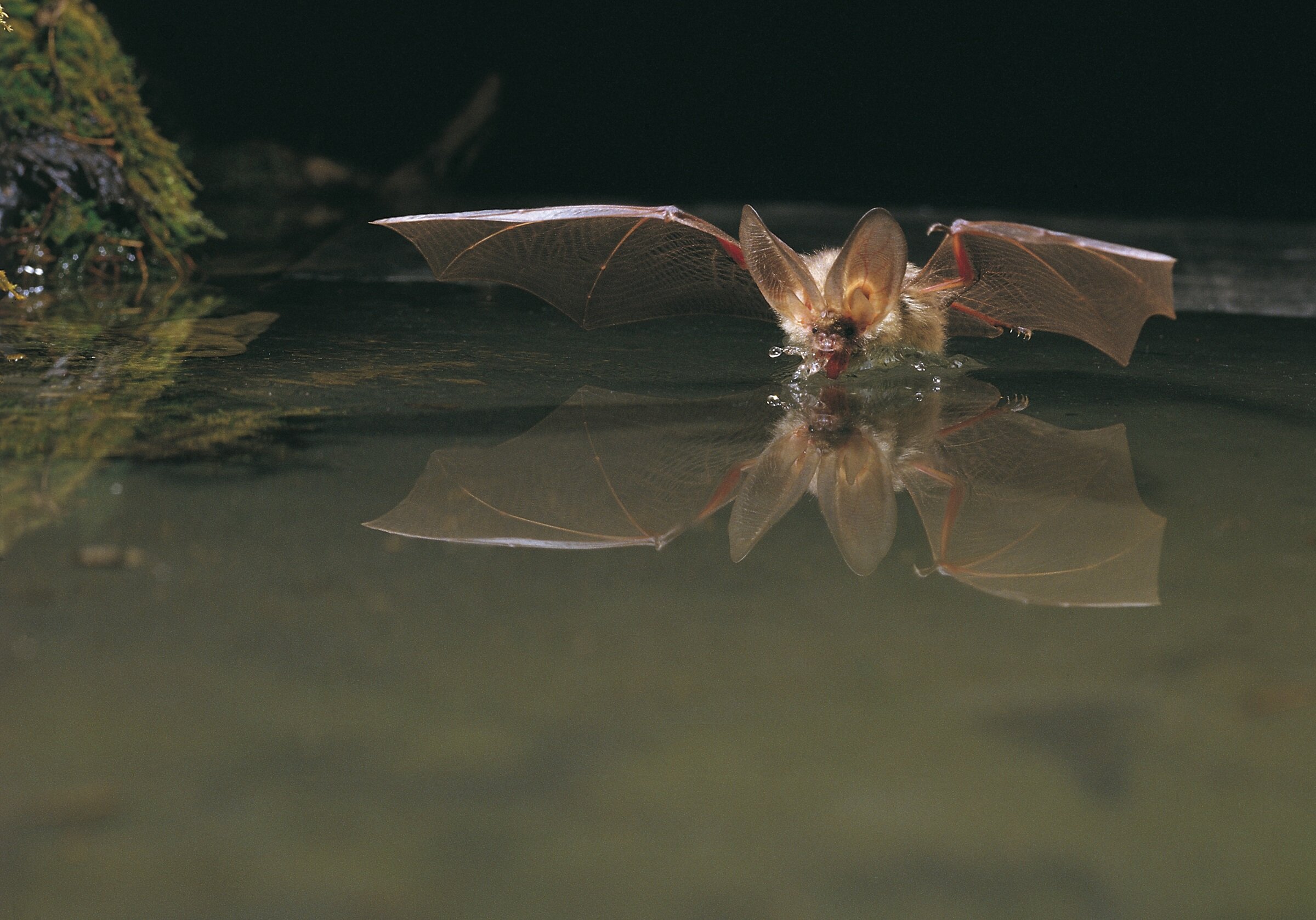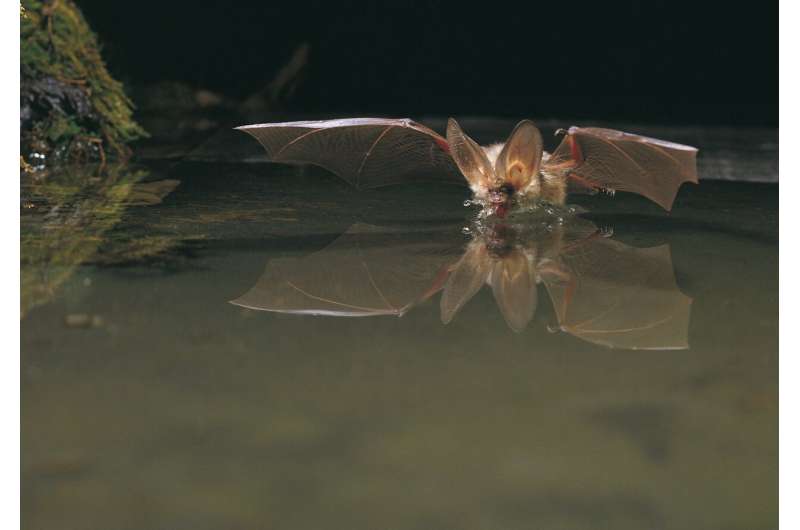

More than 500 bat fossils have been discovered at the Messel Pit UNESCO World Heritage Site over 42 years. A new study, published today in the journal Palaeobiodiversity and Palaeoenvironments, investigates whether the high number of fossils is due to an unusual excess mortality rate.
The researchers discuss two hypotheses: death by toxic gases, or death due to cyanobacteria in the water of Lake Messel. However, experiments and a survey of drowned bats in swimming pools suggest that bat mortality in Lake Messel is comparable to that in modern-day swimming pools.
Hundreds of fossil bats have already been recovered from the 47-million-year-old oil shales of the Messel Pit UNESCO World Heritage Site. “The vast majority are complete skeletons; the rest are isolated wings or heads,” explains PD Dr. Krister T. Smith from the Senckenberg Research Institute and Natural History Museum Frankfurt.
“In most cases, we are dealing with the species Palaeochiropteryx tupaiodon, a small bat that is comparable to modern bats in many significant aspects,” adds his Senckenberg colleague Dr. Renate Rabenstein.
In their new study, Smith, Rabenstein, and Prof. Dr. Joy O’Keefe from the University of Illinois Urbana Champaign, U.S., investigate whether the numerous bat fossils indicate an excess mortality of the animals at Lake Messel and what might be the underlying reasons for this.
“There are currently two hypotheses to explain what caused the large number of fossils in the Messel rock layers: inhalation of toxic gases such as carbon dioxide that had accumulated above the lake, causing the animals to lose consciousness and subsequently drown, or the drinking of surface water contaminated with cyanobacterial toxins, which then led to the bats’ demise.
“Both hypotheses imply a much higher mortality rate than is assumed for accidental deaths, for instance by simply drowning,” explains Smith.
To test the current hypotheses, the researchers asked the following questions: What is the natural mortality rate for bats in a small body of water? Can it be expected that drowned bats are preserved as complete skeletons? And is the number of bat skeletons found at Messel higher than would be expected based on the answers to the first two questions?
In their search for answers, the researchers took an unusual series of approaches. To determine the natural mortality rate of bats, they turned to swimming pools in private homes. Based on anecdotal reports of bats drowning in swimming pools, they developed a 29-question online survey targeting pool owners in the United States.
Based on 496 responses, the scientists were able to deduce that bats regularly drown in swimming pools there. “It has long been noted that factors such as water scarcity cause bats to seek out swimming pools as a water source. It is possible that certain features of pools are more likely to cause bats to drown if they get into the water,” explains Dr. O’Keefe.
The highest recorded number of drowned bats was 14 per year. “Of course, Lake Messel cannot be directly equated with private pools. It was much larger, there were more severe storms during the Eocene greenhouse climate, and the lake—unlike some swimming pools—was available year-round. In other words, we hypothesize that these factors could have caused an even higher mortality in bats that visited the lake to drink,” adds Smith.
To estimate an annual rate for the occurrence of bat fossils in Messel, the team recorded all previous fossil finds of bats and carried out experiments with recent bats that had previously died at the Frankfurt Zoo to simulate their drowning and sinking. The 46 dead bats with wingspans of 300 millimeters used for this purpose are easily comparable with the most common Messel bats.
“We wanted to use this method to understand how quickly bat carcasses sink to the bottom and how many of the drowned bats can therefore actually be preserved as skeletons on the lake bottom,” says Rabenstein.
The experiments show that carcasses with water-filled lungs tend to sink faster than those with air-filled lungs. All animal corpses that initially sank in shallow water subsequently inflated and floated near the surface until they disintegrated and finally sank within days to weeks. “Lake Messel must have had a considerable depth, otherwise we would only find disarticulated skeletons,” adds Smith.
“When we combine all of our results, it becomes apparent that the annual bat mortality at Messel Lake is of the same order of magnitude as the mortality in modern swimming pools. Our quantitative analyses provide no evidence that bat mortality at Messel exceeds a ‘normal’ or ‘background’ level—Lake Messel can therefore not be described as a ‘death trap’ for the flying mammals or other animals,” adds Smith in conclusion.
More information:
Krister T. Smith et al, Was Palaeolake Messel a death-trap? Insight from modern bat drownings and decay experiments, Palaeobiodiversity and Palaeoenvironments (2024). DOI: 10.1007/s12549-024-00631-4
Provided by
Senckenberg Research Institute and Natural History Museum
Citation:
The mortality rate of bats at modern-day swimming pools is comparable to that at Messel 47 million years ago (2024, October 31)
retrieved 31 October 2024
from https://phys.org/news/2024-10-mortality-modern-day-pools-messel.html
This document is subject to copyright. Apart from any fair dealing for the purpose of private study or research, no
part may be reproduced without the written permission. The content is provided for information purposes only.